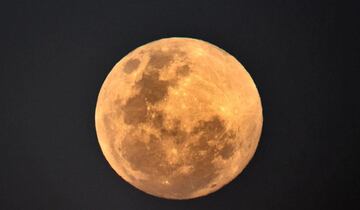ASTRONOMY
What is a Beaver Moon? Origin and Images
On Monday, November 27, the full Beaver Moon appeared. What is the origin of this lunar event’s name?

The November Full Moon, also known as the ‘Beaver Moon’, will be the second to last one that astronomy enthusiasts can witness in 2023.
Why is it called the “Full Beaver Moon”?
According to astronomers, the full moon that occurs in November is called the ‘Beaver Moon.’ This name originated from ancient civilizations that inhabited North America, who observed that during this phenomenon, beavers would hibernate after collecting enough food to survive the winter season. The full moon provided them with enough light to take refuge and stay safe during their hibernation.

Astronomy enthusiasts often recount the tale of how ancient civilizations used to set traps in the forests and jungles during the full moon in November to catch beavers for food. In the last few weeks of the year, some of these trapped animals were used for two purposes - food and clothing. Their fur was removed to make layers of clothing that helped humans stay warm during the cold winter months.
The names of all full moons
- January 7: Wolf Moon
- February 5: Snow Moon
- March 7: Worm Moon
- April 6: Pink moon
- May 5: Moon of flowers
- June 4: Strawberry Moon
- July 3: Deer Moon
- August 1: Sturgeon Moon
- August 31: Supermoon blue
- September 29: Harvest moon
- October 28: Hunter's Moon
- November 27: Beaver Moon
- December 27: Cold Moon
The Data! According to NASA, the November full moon is also known by the name: ‘beaver moon,’ ‘frost moon,’ or ‘snow moon’ due to the winter season, the intense cold, and the beaver season.





